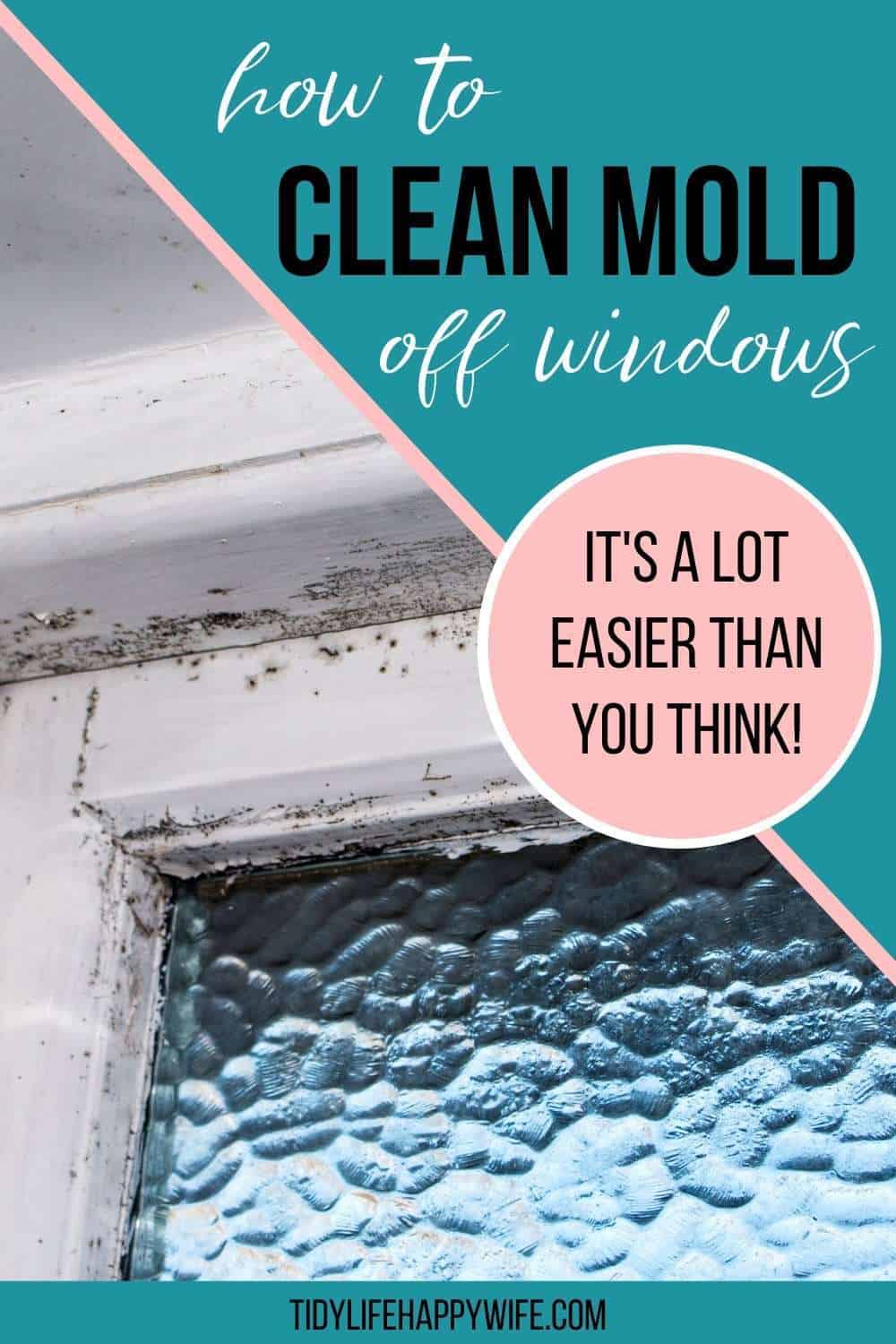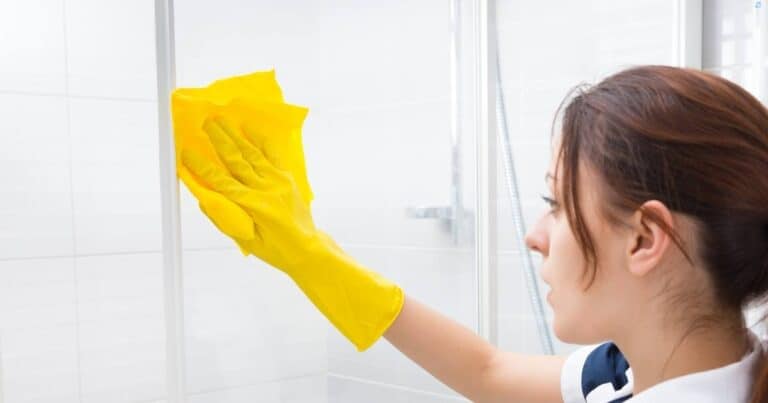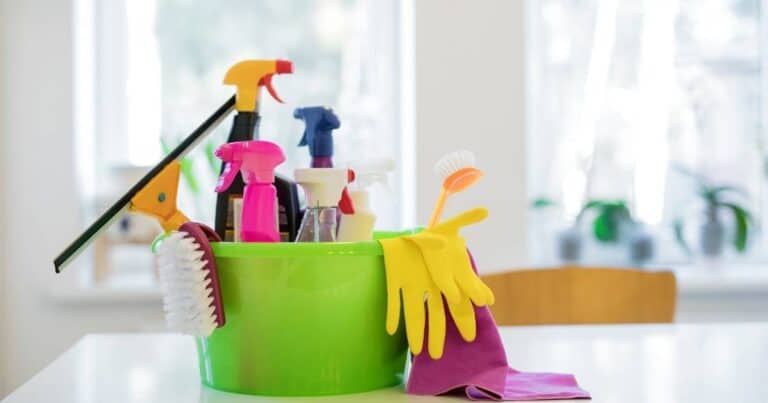How to Clean Mold Off Windows and Prevent It From Coming Back
Mold on your windows can be a real hassle. Luckily, you can clean it up yourself and avoid paying an arm and leg for mold removal! Here’s how to clean mold off your windows and keep it from returning.
Mold grows on both porous and non-porous surfaces. It can also spread to any nearby area that has enough moisture. Mold is one of those pesky problems that cause major damage when left untreated.
It also has the potential to cause serious health problems in those with sensitive immune systems, including respiratory issues and major allergic reactions.
If you see those nasty little black mould spots on or around your windows, clean it off as soon as possible. Once it’s gone, identify and eliminate the root cause to prevent it from returning.
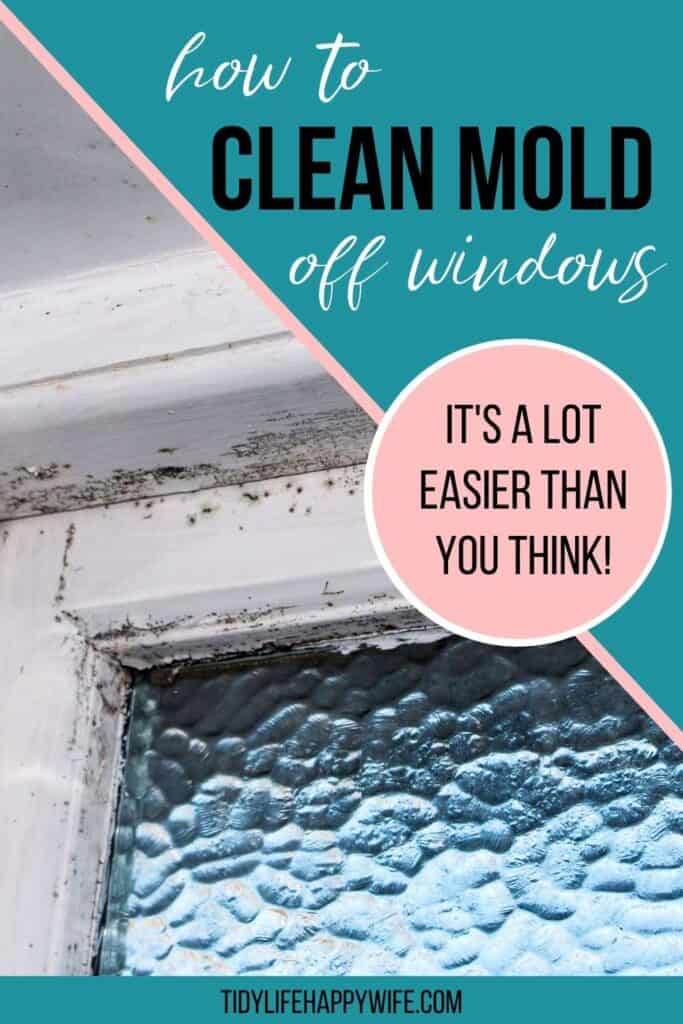
This post may contain affiliate links. Please see my disclosure policy for details.
Why is mold growing on my windows?
Most types of mold species grow well in warm, moist environments. Window condensation combined with dust and other organic materials in the surrounding areas creates the perfect environment.
Bedrooms and bathrooms are particularly susceptible to window mold because of the high humidity and dust floating around from toilet paper, linens, clothing, and dead skin cells.
How to Clean Mold Off Windows
One of the best ways to clean moldy windows is a multi-step process that gently removes the excess mold growth, kills any lingering spores and eliminates the excess moisture in the affected area.
Before you get started, remember that mold is an irritant and can cause allergic reactions including eye and skin irritation, runny nose, scratchy throat, and lung irritation1.
*** WARNING – if you’re cleaning a large area and believe it’s black mold, please consider consulting a professional cleaner for mold removal.
GET YOUR CLEANING DONE DURING THE WEEK!
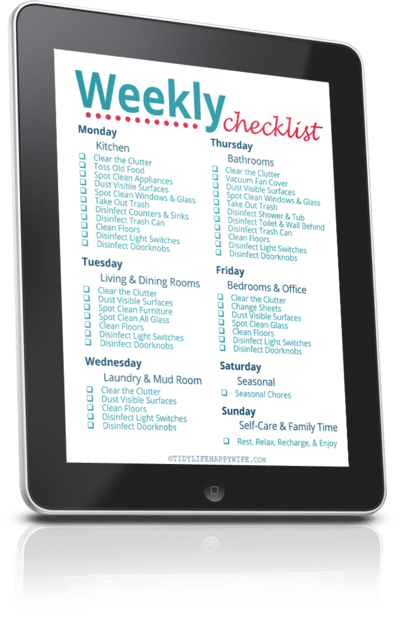
Join thousands of VIPs for cleaning, decluttering, and organizing tips sent straight to your inbox. As a welcome gift, we’ll send you this FREE printable Weekly Cleaning Checklist that lists exactly what to deep clean in every room of your home.
1. Grab Your Supplies
Mold spores spread easily, so take some safety precautions to help prevent inhalation and direct skin contact. The following protective gear and disposable supplies are recommended when tackling any patches of mold yourself.
- Face Mask – A respiratory mask rated for mold removal is recommended. A regular dust mask doesn’t filter out small enough particles to catch the tiny mold spores.
- Safety Goggles – Safety glasses may be sufficient for cleaning a small amount of mold but goggles offer better protection.
- Protective Gloves – Powder-free nitrile goves work well, but you could use any type of latex or rubber gloves you choose – Just make sure you wear gloves any time you’re dealing with mold.
- Disposable Rags/Cloths – Paper towels and clean rags are sufficient for this process.
- Trash Bag – A plastic bag from the grocery store or a bathroom trash bag is fine.
- Cleaning Solution – Vinegar, tea tree oil, and baking soda are all effective for killing mold. They all have antifungal properties that kill tiny spores better than most harsh chemicals. Mix as follows in your favorite spray bottle for optimal results;
- Tea Tree Oil Solution – 1 teaspoon per cup of water
- Baking Soda Solution – 1 teaspoon per cup of water
- Vinegar – white or cleaning – use undiluted. I strongly recommend using cleaning vinegar because it’s approximately 20% stronger than undiluted white vinegar2. There are many things I never clean with vinegar, but it’s the best choice for this task as the mild acid is the most effective solution for killing mold on both porous and hard surfaces.
Avoid Using These Supplies
- Vacuum Cleaner – Leave the vacuum in the closet for this task. Even with a good hepa filter, vacuuming can disturb the spores and send them airborne. Plus you’ll need to clean the mold out of everything including the vacuum nozzle, hose, and canister.
- Chlorine Bleach – Bleach doesn’t actuall kill mold, it bleaches the color out of it. Bleach is also made up of mostly water, which is exactly what mold needs to grow.
2. Remove the Visible Surface Mold
With the window closed, spray a paper towel with your cleaning solution and place it over the moldy area. Avoid spraying the mold directly because the power of the spray could launch spores into the air.
Mold is no joke! Make sure you cover all of the visible molds on your window glass, frames, window casings, and sills with cleaner-soaked paper towels. Next, spray these wetted areas some more to ensure that none of the molds are missed in the process.
The towels should be left in place for at least 60 minutes to allow the solution enough time to penetrate and kill any mold present.
It’s time to get rid of the mold! To do this, gently wipe away as much visible fungus from your surface while ensuring that you don’t miss any spots or crevices where mold might be hiding out waiting for a chance at life again.
Repeat until you can’t see any mold on the window panes, frames of the windows, surrounding trim, and window sills.
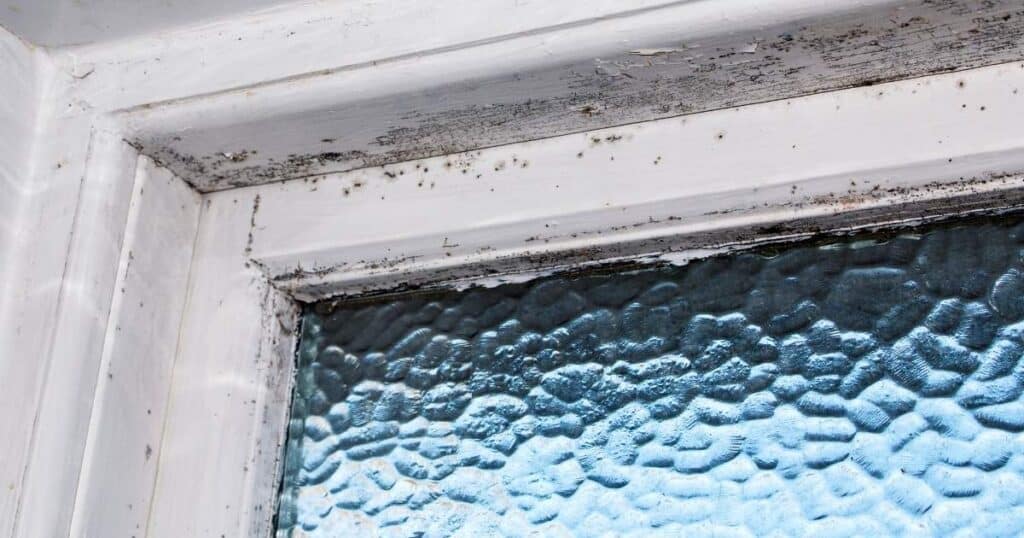
3. Remove the Hidden Mold
Open the window and repeat the process for the hidden areas. Make sure you clean the bottom of the windows, the inner surface of the window frames, and inside the window tracks. Don’t forget to clean the window screens and frames too.
When you can’t see any more molds, spray the areas with the cleaning solution and give it one last, good scrub with a clean cloth.
Wipe the areas with a dry cloth and try to absorb as much excess moisture as possible. Use a fan to finish drying the area.
Toss the moldy towels in a disposable plastic bag and get rid of them. If you used any supplies that weren’t disposable, make sure to soak them in cleaning vinegar for a minimum of an hour to get rid of any residual mold spores.
4. Identify and Eliminate the Root Cause
Now that the mold is cleaned up, it’s time to find the source.
If condensation and dirty window tracks are the cause, try deep cleaning the window tracks a couple of times a year.
Think you have a leak of some kind? Inspect the interior and exterior window frame to see if there are any cracks, holes, or openings that you can seal.
Suspect high humidity might be your issue? Make sure the exhaust fans are working correctly, or try a dehumidifier.
How do I stop mold from growing on my windows?
The most effective way to stop mold from growing on your windows is to control the humidity, eliminate the extra moisture, and keep your window areas free of any organic material.
If your windows are prone to excess condensation, or you have high humidity, get a dehumidifier. The humidifier will pull the extra moisture out of the air and help prevent mold growth.
It’s a good idea to treat mold-prone areas with a 3% concentration of hydrogen peroxide. Lightly spray the area and let the peroxide dry.
Mold Problem Averted
If you find mold in your home, it’s important to act quickly. Mold has the potential to cause dangerous health problems and should be taken seriously when found indoors.
The good news is you kill and remove the mold yourself in just a few steps.
Once you’ve dealt with the mold, a little investigation and a few preventative steps will keep this persistent problem from returning.
Check out all of my cleaning tips and grab the weekly cleaning checklist below.
GET YOUR CLEANING DONE DURING THE WEEK!

Join thousands of VIPs for cleaning, decluttering, and organizing tips sent straight to your inbox. As a welcome gift, we’ll send you this FREE printable Weekly Cleaning Checklist that lists exactly what to deep clean in every room of your home.
1How do molds affect people? – Environmental Protection Agency
2What is cleaning vinegar and how to use it – Family Handy Man

